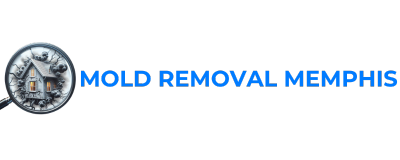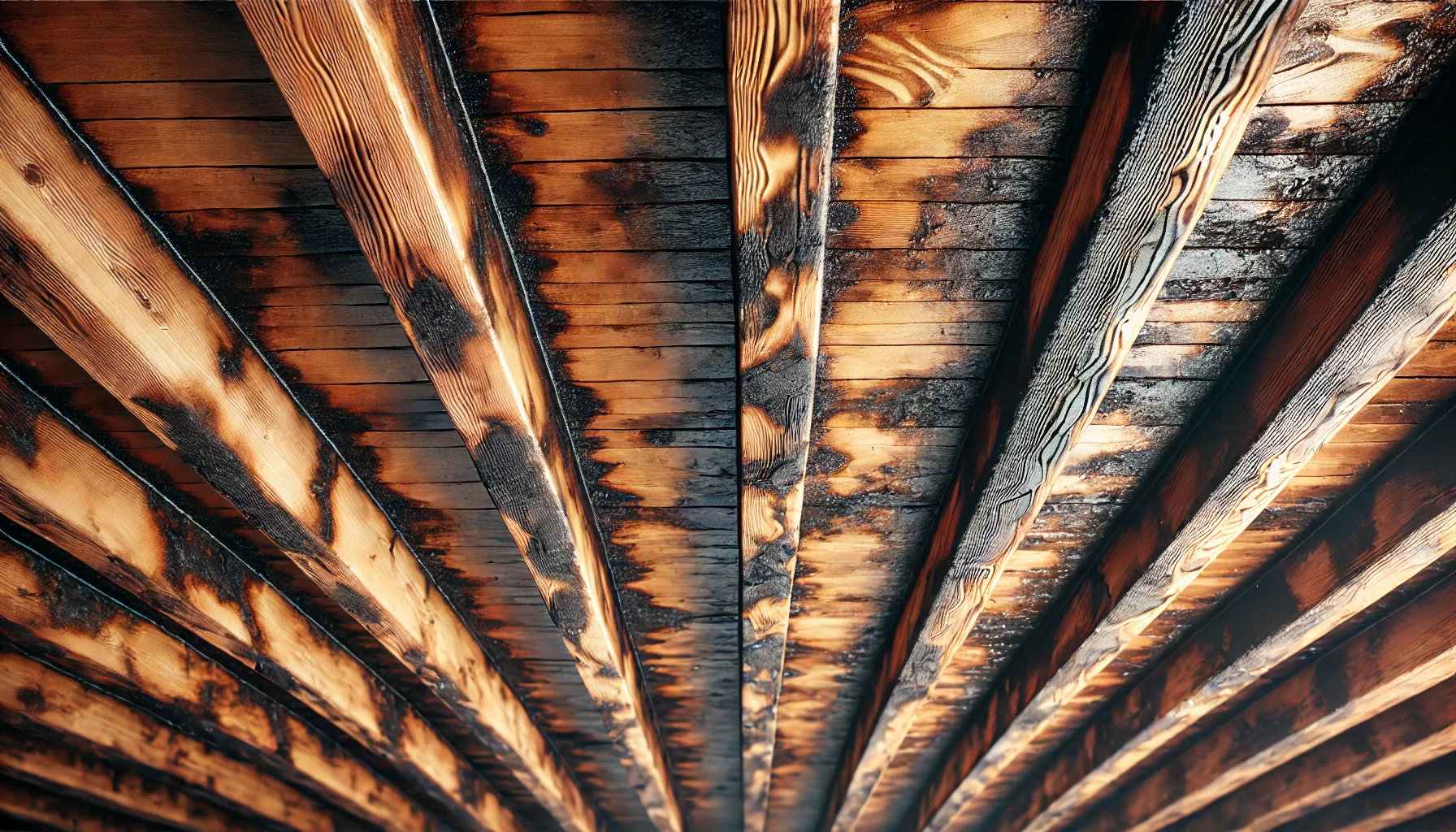Mold On Plywood In Attic: How To Remove And Get Rid Of It?
TL;DR: Mold on plywood is a serious issue that often happens because of moisture buildup. This is common when plywood is exposed to weather or used in wet places like basements or bathrooms. To spot mold, you need to look closely, as some discoloration might just be moisture stains and not mold itself. To clean mold on plywood, you can use a mixture of 50% water and 50% bleach, hydrogen peroxide, or commercial mold removers made for wood. A diluted vinegar solution can also be effective. After cleaning, it’s very important to dry the plywood completely to stop mold from coming back. You can use fans or dehumidifiers to help remove all the moisture. Keeping indoor humidity levels around 55% is key to preventing mold growth. If mold has seeped deep into the wood, you might need to replace the plywood. This is important because damaged plywood can lose its strength, which is crucial for construction and DIY projects.
Finding mold on plywood can be a challenge. Many homeowners encounter this issue, whether it’s on roof plywood, new plywood, or pressure-treated plywood. You might find mold on plywood subflooring, in the attic, or even on plywood walls. It can also hide under carpets or be present in the garage. Mold grows well in damp conditions, making it important to address it for your home’s safety. You’re not alone in facing this problem. This guide will help you understand and manage mold on plywood effectively.
What Does Mold On Plywood Look Like?
Mold on plywood often shows up as dark spots or patches in colors like black, green, or even orange. One type, known as black mold or Stachybotrys chartarum, raises concerns for many people. However, experts point out that the color of mold doesn’t necessarily indicate how harmful it is. Different mold species can appear black or dark green, and the dangers associated with black mold are often overstated.
Green mold can also occur, especially if plywood has been stored incorrectly or exposed to moisture. This type of mold is usually easier to clean off, suggesting it hasn’t taken hold as firmly. The texture of mold varies; it might feel fuzzy, slimy, or powdery, depending on the species and how much it has grown.
You can often smell mold before you see it. A musty odor is a strong sign that mold is present. Discoloration of the wood surface is also common, which can make it look worse over time. Mold tends to grow in places where humidity is above 60% and wood moisture is over 20%. So, if you spot dark spots, unusual colors, or smell something musty on your plywood, it likely means mold is there.
It’s important to remember that not all dark stains on plywood are mold. Some may come from other sources, like tar paper or treatment residues.
What Causes Mold On Plywood?
Mold growth on plywood mainly happens due to moisture and the way plywood is made. Plywood is created by peeling layers of wood from trees and pressing them together with heat and pressure. This process makes plywood a good food source for mold because it caramelizes the wood sugars, making it attractive to mold.
Modern plywood often comes from faster-growing trees that have more sapwood. Mold tends to prefer sapwood over heartwood. When plywood gets wet and stays damp, mold spores can quickly settle and spread. The structure of plywood makes its cellulose easier for mold to access compared to solid wood.
Several factors can lead to moisture buildup on plywood. Poor ventilation, high humidity, and water leaks or flooding can all create the right conditions for mold to grow.
Can Mold On Plywood Lead To Wood Decay And Rot?
Mold on plywood can indeed lead to wood decay and rot under certain circumstances. While mold itself doesn’t directly damage the structure, it can signal more serious problems.
When mold appears, it often means there are moisture issues. This moisture creates a perfect environment for decay fungi to thrive. Unlike mold, decay fungi can break down the cell walls of wood, which can ultimately lead to structural failure. Therefore, mold serves as an early warning sign of conditions that may encourage decay.
Decay fungi tend to grow more slowly than mold, so you’re likely to notice mold first. However, if the plywood stays damp for a long time, decay fungi can start to develop. If the wet plywood dries out thoroughly and isn’t kept damp for too long, the risk of decay fungi taking hold is reduced.
Can Mold Grow On Pressure Treated Plywood?
Mold can indeed grow on pressure-treated plywood. This type of wood is made to resist decay and insect damage, but that doesn’t mean it’s completely safe from mold. Mold needs certain conditions to grow, such as moisture levels above 30%, oxygen, temperatures between 50°F and 120°F, and a food source like dirt or organic matter found in the wood. If pressure-treated plywood is stored incorrectly or kept in wet conditions, it can hold moisture, leading to mold or mildew on its surface.
Some customers have reported that pressure-treated plywood can look moldy when they buy it. This raises questions about its safety and strength. As per our experiences, the mold is usually just on the plywood surface and can be cleaned off without harming the wood’s structural integrity. To remove mold, you can scrub it with a mixture of bleach and water or use vinegar. However, it’s important to fix any moisture problems to stop mold from coming back.
While mold on pressure-treated plywood is usually not dangerous if dealt with quickly, it can cause aesthetic issues and might affect air quality. If the wood is kept dry, existing mold can generally be cleaned off without much risk. But if the plywood will be exposed to moisture, it’s essential to use proper storage and ventilation to reduce the chance of mold growth.
Can Mold Grow On Plywood Sheathing?
Mold can grow on plywood sheathing in attics, as seen in many home inspections. Mold growth often happens due to several reasons, such as the absence of a vapor barrier. This allows warm, moist air from living areas to condense on the cold roof sheathing. Poor ventilation in the attic can worsen moisture problems, especially in colder regions. Additionally, bathroom vent fans that vent into the attic can lead to mold and discoloration.
For cleaning mold on sheathing, we recommend using antimicrobial solutions like Sporicidin, Concrobium or a mixture of bleach and trisodium phosphate (TSP). Physical removal methods, such as scrubbing the affected areas and using a HEPA filter vacuum, can also be effective.
Well-ventilated attics are key in preventing mold growth. However, mold can also be caused by improper ventilation, past leaks, ice dams, and exhaust from bathroom fans or dryer vents that exit into the attic.
Make sure that bathroom and kitchen vents lead outside can help reduce moisture buildup. Installing a soffit ventilation system can also prevent future mold issues. In some cases, replacing affected sections of the roof deck with new, moisture-resistant plywood is suggested during roofing work.
How To Get Rid Of Mold On Plywood?
Here is how you can remove mold on plywood:
Step 1: Gather Cleaning Supplies
Collect the necessary cleaning supplies before starting the cleaning process. You will need:
- White vinegar
- Hydrogen peroxide
- Bleach (optional)
- Commercial mold sprays (like Concrobium)
- Boracare (for pest protection)
- A stiff brush
- A HEPA vacuum
- Personal protective equipment (PPE) including gloves, goggles, and N95 masks
Step 2: Prepare The Area
Ensure the area is well-ventilated before you begin cleaning. Open windows and doors to allow fresh air to circulate. Isolate the affected area by using plastic sheeting to minimize the spread of mold spores during the cleaning process.
Step 3: Apply Vinegar Solution
Spray white vinegar directly onto the moldy areas of the plywood. Vinegar effectively penetrates the wood and kills mold. Allow it to sit for at least 30 minutes before wiping it away with a clean cloth or scrubbing with a stiff brush.
Step 4: Use Hydrogen Peroxide For Treatment
If vinegar alone does not eliminate the mold, apply hydrogen peroxide to the affected areas. Pour it directly onto the moldy spots, and if it bubbles, this indicates the presence of mold spores. Scrub the area after letting it sit for about 10 minutes.
Step 5: Consider Bleach As A Last Resort
If the mold persists, you may mix one cup of bleach with one gallon of water. Apply this solution to the plywood, but be cautious, as bleach can weaken the wood and may only mask the mold without killing the roots. It is generally less effective on porous materials like wood.
Step 6: Use Commercial Mold Sprays
For additional treatment, consider using commercial mold sprays, such as Concrobium. These products are designed to bind to and kill mold spores. Follow the manufacturer’s instructions for application and coverage.
Step 7: Clean With Boracare
If you are concerned about pests as well as mold, apply Boracare to the plywood. This product is suggested for killing mold and providing wood protection against pests.
Step 8: Vacuum Loose Spores
After cleaning, use a HEPA vacuum to remove any loose mold spores from the surface of the plywood. This step helps prevent the spread of spores to other areas of your home.
Step 9: Ensure Proper Drying And Airflow
After cleaning, it is crucial to dry the plywood thoroughly. Use fans to increase airflow in the area and help dry out any remaining moisture. Proper drying is essential to prevent mold from returning.
Step 10: Control Moisture Levels
Identify and fix any sources of moisture that may contribute to mold growth. Repair leaks in plumbing or roofing, and consider using dehumidifiers in areas prone to high humidity. Maintaining humidity levels around 55% is crucial for preventing mold growth.
Step 11: Monitor High-Risk Areas
Continuously monitor moisture levels in high-risk areas such as kitchens and bathrooms. Regularly check for any signs of water damage or dampness that could lead to mold growth.
Step 12: Apply Mold-Resistant Sealants
After ensuring the plywood is clean and dry, consider applying a mold-resistant sealant. This treatment provides an additional layer of protection against moisture and helps inhibit future mold growth.
Step 13: Seek Professional Help If Necessary
If mold infestation is severe or if the plywood is structurally compromised, hire licensed mold remediation professionals. They have the expertise and tools to effectively manage mold issues and ensure that your plywood is safe for use.
Can Moldy Plywood Be Salvaged Or Should It Be Replaced?
Deciding whether to salvage or replace moldy plywood depends on how much damage there is and the type of mold present. If there is surface mold on framing lumber, which is similar to plywood, you can often clean and save the material. Washing off the mold’s spore-producing parts with soap, water, and an abrasive pad can be effective. This method works best for surface mold that hasn’t soaked into the wood.
On the other hand, if the mold is widespread or if the plywood has been wet for a long time, you may need to replace it.

